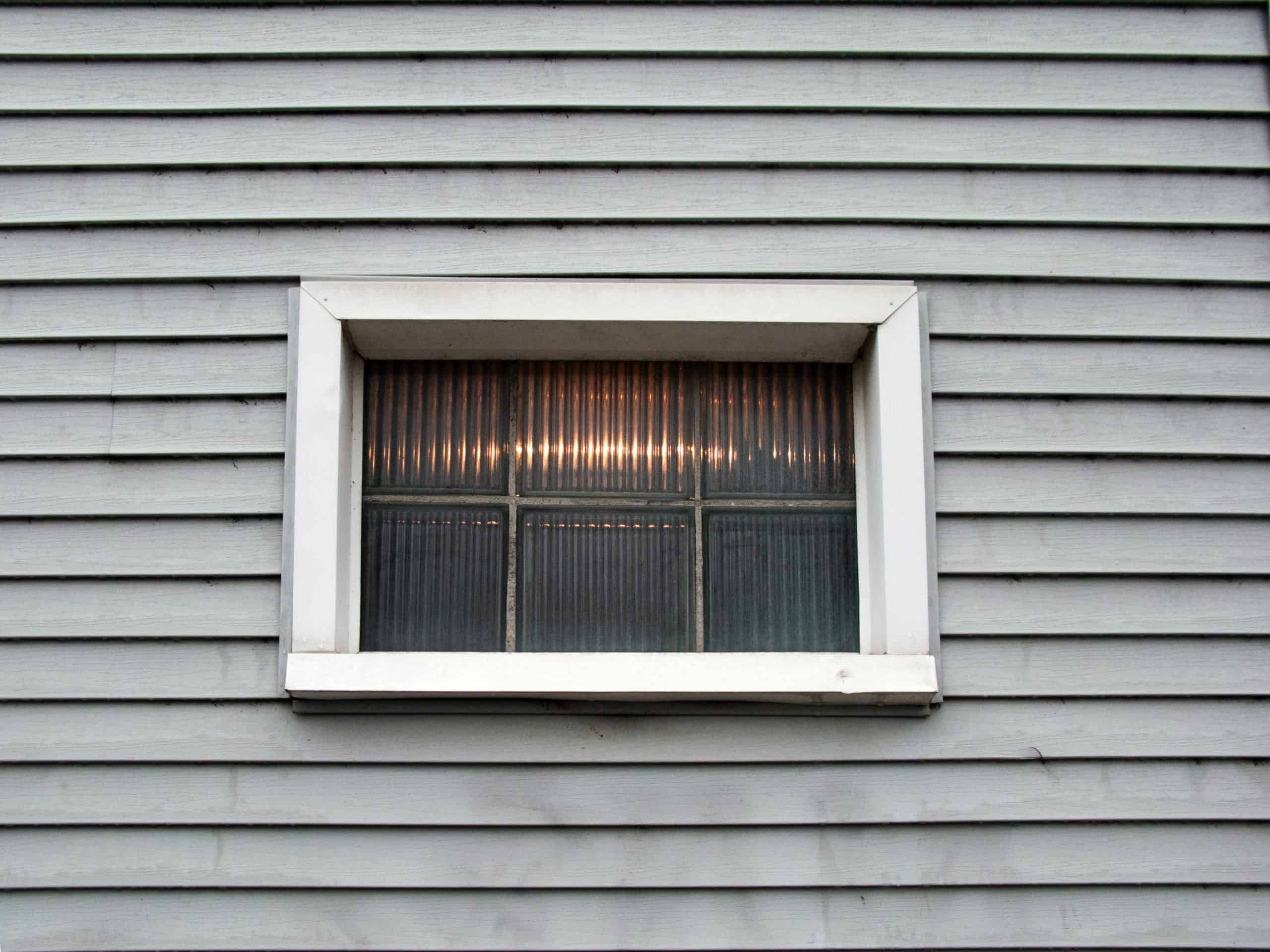Modern vinyl siding is built to last decades and requires little to no maintenance. But over time, its color can fade due to exposure to the sun. So can you paint vinyl siding? The short answer is yes.
It is normal for the vinyl siding to fade unevenly, and that can take away from the charm of any home. However, we’ll explain how you can bring your aging siding back to life.
Does Painting Vinyl Siding Last?
Even if your vinyl siding hasn’t faded terribly, you may have grown tired of the color. What’s more, is you may not have been the one who picked the color and now want to paint over it.
But is it safe and will it last? Can you paint vinyl siding?
No matter the case, if you’re wondering whether it’s safe to paint vinyl siding, the answer is yes — given that you use the right paint. You will also need to ensure that painting the siding will not void the warranty if it is still valid.
If you want to be sure your vinyl siding warranty will still apply after painting, double-check the manufacturer’s terms and conditions beforehand and ensure that you comply with any stipulations. The manufacturer may require you to use a specific paint and color.
But what are the materials you will need to paint vinyl siding? More importantly, what is the right way of approaching this task?
Can You Paint Vinyl Siding? Follow These Steps
If the siding covers most of your home’s exterior, painting all of the vinyl can be a massive undertaking. But it’s not all bad since painting vinyl siding is not complicated.
When homeowners first think about painting their siding, they often worry that they will need to learn the right painting techniques to do it right. But if you’ve painted anything before, you’ll be up to the task of painting your vinyl siding.
Here are the steps to follow:
#1 Get the Right Tools and Products
- A soft cloth to clean the dirt off the siding before painting. Even better, a powerwasher to make the job go faster.
- A ladder to reach the siding portions high up off the ground for masking or painting.
- Plastic sheeting or masking paper to cover the doors, windows, and hardware from splatter.
- Painter’s tape to keep the door frames, trim, and windows free from paint. You can also use this tape to keep the masking material in place.
- Powdered laundry detergent, household cleaning powder, and laundry bleach (liquid) to make a mixture to clean the vinyl siding before painting.
- A paintbrush, paint roller, or spray painting equipment, depending on your preferred approach to the task. If you’re using a paint roller, clean it before use, and if using a paint sprayer, read over the equipment’s instructions carefully.
Of course, besides all this, you need the actual paint.
#2 Find the Right Vinyl Siding Paint Color
Choosing the paint color can be the most challenging part of the process. There is no shortage of choices, and it can be difficult to know where to start if you aren’t big on DIY.
Can You Paint Vinyl Siding a Different Color?
Luckily, there are a few ways to narrow down your options before finally finding the one paint color you feel confident putting on the exterior of your beloved house.
One way to approach painting your vinyl siding a different color is to study your home’s style. Most paint manufacturers sell historically accurate paint color collections that match the style of a home.
Some good examples include the exterior color palettes that Sherwin-Williams offers for Georgian, Queen Anne, Suburban Modern, and Craftsman-style homes. Of course, there are more options to be found.
If you want to incorporate your taste into your paint color choice, observe the colors of the parts of your home other than your siding. You could shortlist colors that go with the roof color or the stones or bricks in the facade. To understand what your home will look like with a different paint color, search for images of homes with the colors you desire.
Many communities regulate the colors you can paint your house and depending on where you live, you may need approval from the homeowners association before painting vinyl siding.
Your neighborhood’s restrictions may help narrow down your options, but you could also decide what paint color to use based on the local climate. Besides the roof’s color, the color of a home’s walls also impacts the heat gain. Using cooler colors is the best way to minimize heat gain.
It’s best to avoid painting the vinyl siding with darker colors since they retain more heat and may decrease the life of the siding by increasing the risk of warping. Ideally, you want to paint vinyl siding with a color that is lighter than its current color.
What Kind of Paint Will Stick to Vinyl Siding?
The color is not the only characteristic you must consider when picking paint. You will need to purchase paint with urethane and acrylic resins since these ingredients ensure the paint sticks to the vinyl siding. Further, this type of paint also minimizes the expansion and contraction of vinyl due to heat absorption from the sun.
It’s best to get your hands on latex urethane paint specifically formulated for exterior use.
#3 Search for the Weather Forecast Before Picking the Painting Day
Deciding to start painting your siding when you find the time may seem most convenient, but this is not the case. Before picking up your brush, roller, or spray painting equipment, have a look at the weather forecast for the day.
Ideally, you want temperatures to be mild, with an overcast sky, and low relative humidity. If there is too much heat, wind, or sunlight, you will risk the paint not sticking to the vinyl siding correctly.
If you paint on a humid, windy, or hot day, the paint will look fine initially. However, there is a significant chance that the paint won’t adhere and will begin flaking and cracking as time passes.
It’s best to paint the vinyl siding when the weather forecast predicts clear skies the day after the paint job is complete.
#4 Clean the Vinyl Surface
If you want your paint job to look like it was done by a professional, thoroughly cleaning the vinyl siding surface is a critical step you cannot miss. If you think a rinse with the garden hose will do the trick, you’re mistaken.
The idea behind cleaning the vinyl siding is to rid it of dust, buildup, mold, and mildew. Mix the cleaning supplies mentioned earlier in the following proportions to make the right cleaning solution for the job:
- 1/3 cup of laundry detergent
- 2/3 cup powdered household cleaner
- 1 quart liquid laundry bleach
- 1 gallon water
When the solution’s ready, grab your soft cloth or a bristled brush to work the solution into the vinyl siding and clean it. You can now use your garden hose to rinse off the residue. Ensure the siding has dried off before you proceed.
To make things go a little faster, you can rent a power washer to blast away grime and growth. However, carefully read the instructions beforehand since these devices pack a lot of power and can damage your home.
This is also a great time to give the exterior structure and grounds of your home a quick inspection.
#5 Bring Out the Paint Supplies and Prepare the Siding for Painting
The first order of business is to set up a drop cloth to protect surfaces and plants from the inevitable paint splatters. Bring out the ladder and use it as required, making sure to set it up on a flat and stable surface. It’s best to ask someone to hold the ladder when you’re on it.
This is also the right time to cover the door and window frames with masking paper or plastic sheeting to protect them from the paint. This is especially true if you intend to paint your vinyl siding with an airless sprayer.
Now that your work area is fully set up and your supplies are in the right place, you can begin painting. If the original paint has not worn away, you can paint on the siding directly. However, if the paint has chipped off or worn — even partially — it’s best to use a primer.
Using a primer is the best way to ensure that the paint has good adhesion and the finish looks consistent. Besides, using primer also helps if the vinyl is porous or pitted.
#6 Paint
Wait for the primer to dry if you’ve applied it, and begin applying the paint. Rely on the roller or spray the paint onto the vinyl, leaving the edges and corners uncovered. Use a brush to finish painting those bits.
While there is no wrong way to paint the siding, you must carefully coat the entire surface evenly and brush out any heavily painted areas to ensure there are no drips. We recommend putting on two light coats instead of one thick one.
When the first coat has dried, you can apply the second coat. Remember that the second coat must dry for a minimum of 24 hours since it will only dry completely in that period.
Assess the appearance of the second coat and apply a third coat if it seems necessary.
Why You Should Not Paint Vinyl Siding
Used to vinyl siding would warp or buckle if it was painted – especially if it was painted a darker color. These days there are paint formulas designed specifically for vinyl siding like these from Sherwin-Williams.
You should not paint vinyl siding if you aren’t up for the job. It takes patience, the right tools, and a great deal of time. It can even be dangerous depending on the height of your home and accessibility to hard-to-reach areas.
When to Consider Hiring a Professional Painter
You need to assess whether you’re prepared to paint your siding before you take it upon yourself to do so. Make sure you understand the height and size of your home, the number of hours you can spare for this project, and the condition of the siding.
If you determine that you cannot paint the siding, it’s best to rely on a professional. While the project will cost more this way, the upside is that a professional painter will do the job faster and better than you can. Furthermore, these professionals already have most of the tools needed for the job and can help you pick the right paint color.
When to Consider Replacing the Siding
If your vinyl siding has a lot of rot, holes, dents, and gaps, you may need to replace the siding rather than paint it. Modern siding is durable but still has limited durability. If the siding is 20 years old or older, it’s at the end of its life and will need replacing.
If you aren’t sure whether the siding needs replacement, contact a professional vinyl siding contractor. They will inspect the siding and determine its condition. While new vinyl siding will certainly be sturdier, the replacement will cost more than applying a few coats of paint.


